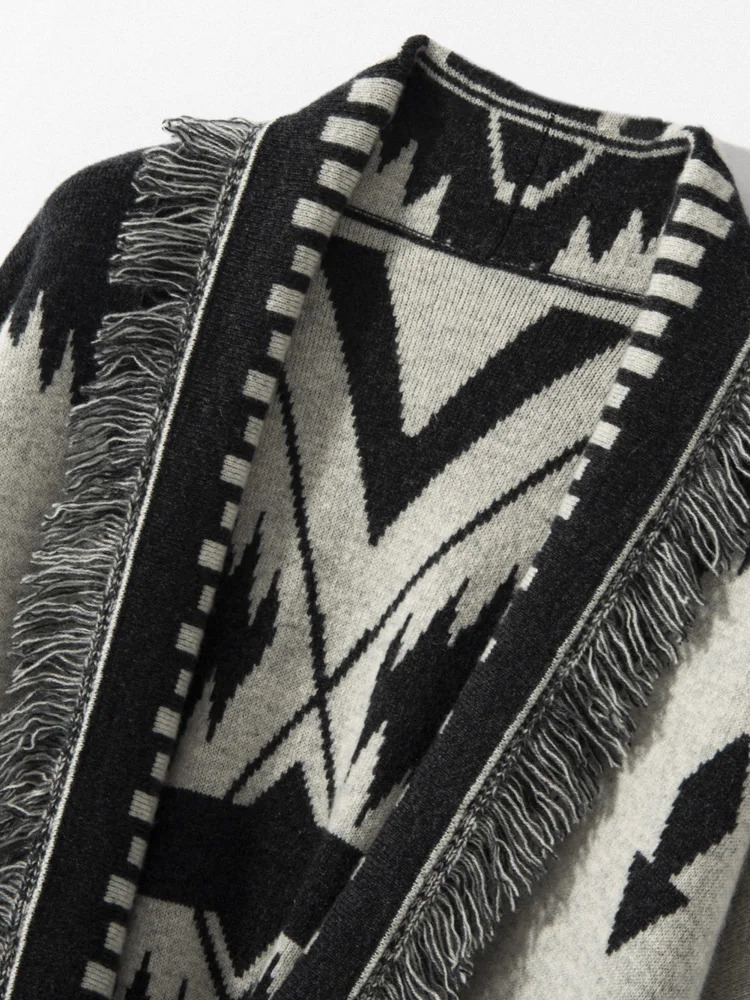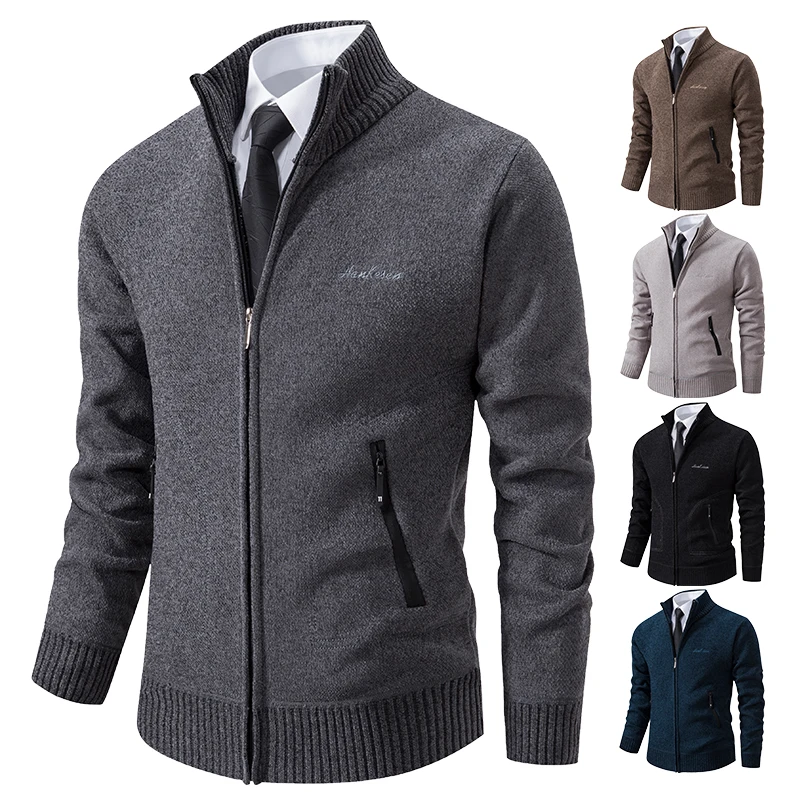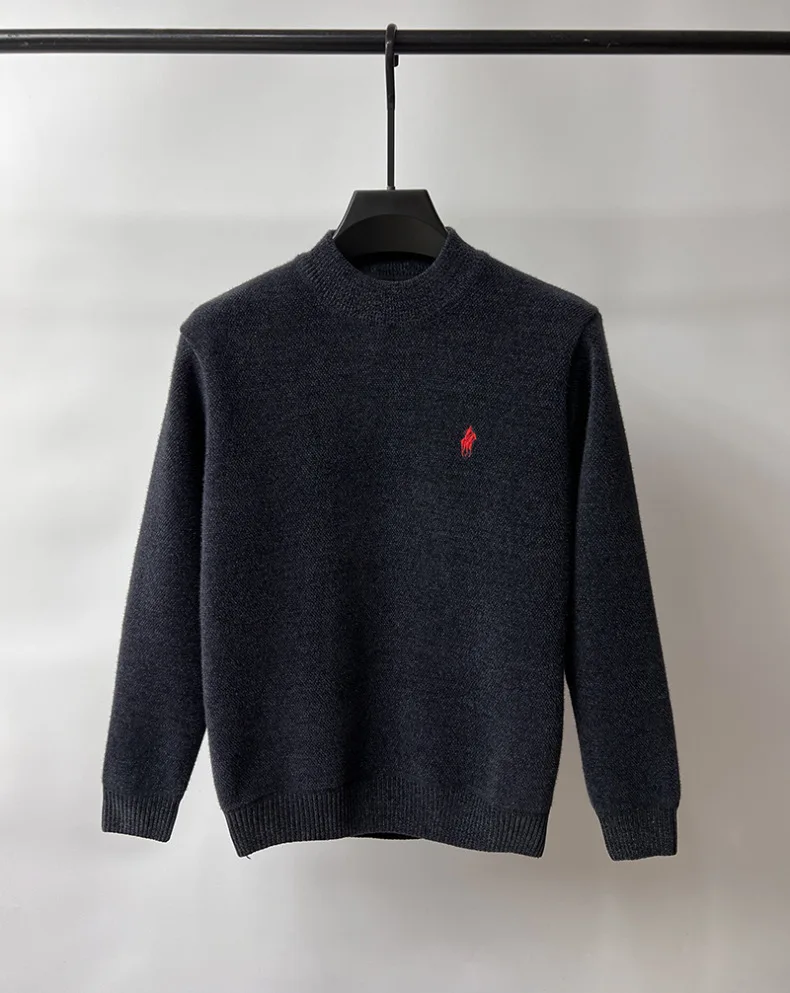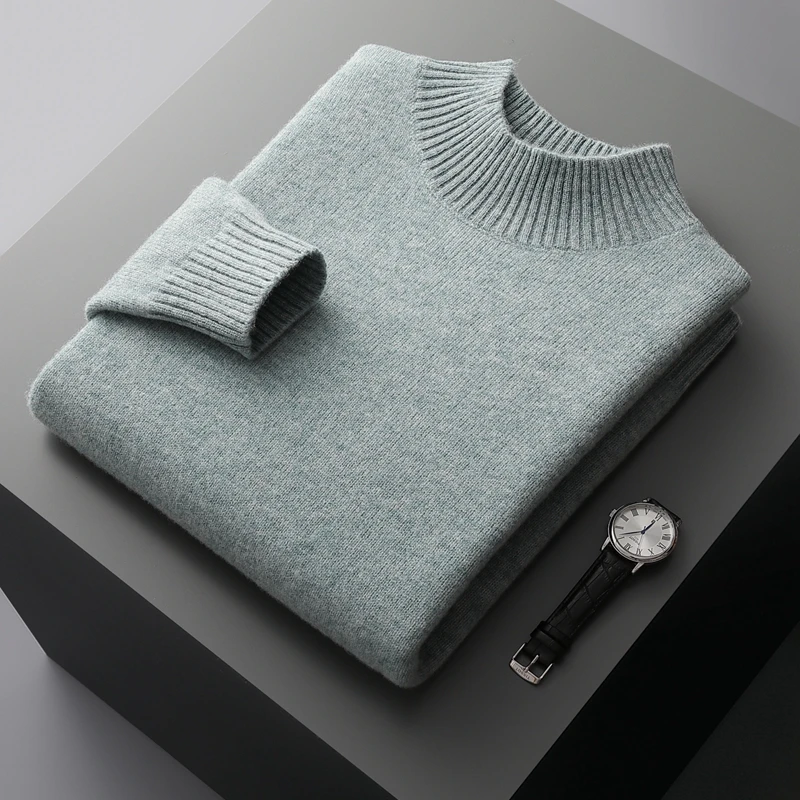Introduction
Cashmere stands as one of the world’s most luxurious natural fibers, prized for its exceptional softness, remarkable warmth, and lightweight feel. Unlike ordinary wool, this premium material comes from the fine undercoat of cashmere goats, making it both rare and valuable. When shopping for cashmere garments, understanding thickness becomes crucial—it directly affects how warm, durable, comfortable, and expensive your cashmere will be.
Three key metrics determine cashmere thickness: ply count (how many yarn strands are twisted together), gauge (the density of the knit), and micron count (the diameter of individual fibers). Each factor plays a distinct role in creating the final fabric’s character and performance. Whether you’re investing in a lightweight summer scarf or a substantial winter sweater, knowing how thickness affects your cashmere experience helps ensure your purchase meets your expectations.
The perfect cashmere piece balances these elements to deliver the right combination of warmth, durability, and comfort for your specific needs. Understanding the fundamental styling tips for cashmere cardigans and other garments starts with grasping these thickness basics.
Understanding Cashmere Thickness: The Three Key Metrics
When evaluating cashmere quality and selecting the perfect garment, three primary factors work together to determine thickness and overall performance. Each metric—ply count, gauge, and micron count—influences different aspects of how cashmere feels, wears, and functions.
These measurements don’t exist in isolation; they interact to create the unique characteristics of each cashmere piece. A thorough understanding of cashmere ply thickness helps you make informed choices about which type best suits your specific needs and preferences. Let’s explore each factor in detail to understand how they contribute to cashmere’s remarkable properties.
What is Ply Count?
Ply count refers to the number of individual yarn strands twisted together to create a single thread. This fundamental measurement directly influences the thickness, weight, and durability of cashmere garments. The higher the ply count, the more substantial and typically warmer the fabric becomes.
Common ply counts and their characteristics include:
1-ply: Consists of a single strand of yarn, creating extremely lightweight, airy fabrics ideal for summer wear. These pieces offer subtle warmth without bulk, making them perfect for mild temperatures or indoor environments. Examples include lightweight summer scarves and delicate wraps.
2-ply: Features two strands twisted together, representing the most versatile and commonly available cashmere. This medium weight offers a good balance between warmth and wearability, suitable for year-round use in moderate climates. Most everyday cashmere sweaters and cardigans use 2-ply construction.
3-4 ply: Creates substantial, heavy-duty cashmere with excellent insulating properties. These thicker constructions provide significant warmth for cold weather and typically offer enhanced durability. Winter sweaters, robust scarves, and outdoor accessories often utilize these higher ply counts.
6+ ply: Reserved for specialized luxury pieces requiring exceptional thickness, such as premium winter coats or ultra-warm accessories for extreme cold.
When choosing the right cashmere ply for your needs, consider both your local climate and how you plan to use the garment—higher ply doesn’t always mean better quality, just different characteristics suited to specific purposes.
What is Gauge?
Gauge measures the knitting density of cashmere fabric, specifically the number of stitches per inch. Unlike ply count, gauge has an inverse relationship with thickness—a higher gauge number indicates a finer, tighter knit with more stitches packed into each inch, while a lower gauge creates a chunkier, more open fabric texture.
Typical gauge ranges and their characteristics:
High gauge (12-16+): Creates a fine, smooth, and lightweight fabric with a sleek appearance. These tightly-knit fabrics drape elegantly against the body and work well for more formal or refined looks. The fabric appears less textured and more uniform.
Medium gauge (8-12): Provides a balanced middle ground with moderate texture and versatile weight. This range accommodates most everyday cashmere garments that blend comfort with a polished appearance.
Low gauge (3-7): Produces chunky, textured knits with visible stitch definition and a casual, cozy appearance. These fabrics have more visual dimension and a substantial hand-feel, often appearing more rustic or relaxed.
Gauge significantly affects a garment’s appearance, weight, and drape. A high-gauge cashmere piece will feel lighter and smoother against the skin, while a low-gauge item creates a more substantial, textured presence. Understanding cashmere yarn weight and its relationship to gauge helps you select pieces that align with your style preferences and comfort needs.
What is Micron Count?
Micron count measures the diameter of individual cashmere fibers in micrometers (microns). This crucial metric directly indicates cashmere quality, with finer fibers (lower micron numbers) producing softer, more luxurious fabrics. Unlike ply and gauge, which are production choices, micron count is inherent to the raw material itself.
Cashmere grades based on micron count:
| Grade | Micron Range | Quality Characteristics |
|---|---|---|
| Grade A | 14-15.5 microns | Premium quality, exceptional softness, superior warmth-to-weight ratio, minimal pilling |
| Grade B | 16-19 microns | Good quality, very soft but slightly less refined, good durability |
| Grade C | 20-30 microns | Lower quality, noticeably less soft, more prone to pilling, heavier feel |
The micron count profoundly affects several key performance aspects:
- Softness: Finer fibers create a smoother surface against skin, with Grade A cashmere offering noticeably superior softness.
- Pilling resistance: Despite their delicate nature, finer fibers typically pill less because they’re longer and more securely anchored in the yarn.
- Insulation: Lower micron fibers create more effective air pockets for superior warmth without added weight.
- Price: Finer micron cashmere commands significantly higher prices due to its rarity and superior performance.
Learning to judge cashmere quality by touch helps you verify micron claims when shopping, as the difference between premium and average cashmere becomes immediately apparent to educated fingers.
How Thickness Affects Your Cashmere Experience
Beyond the technical specifications, understanding how different thickness measurements translate to real-world performance helps you make practical choices for your wardrobe. The interplay between ply, gauge, and micron count creates distinct wearing experiences that suit different occasions, preferences, and weather conditions.
Let’s explore how thickness variations affect four key aspects of cashmere performance that matter most to everyday wear.

Warmth and Insulation Properties
Cashmere’s renowned warmth comes from its unique fiber structure, but thickness measurements significantly influence its insulating capabilities:
Ply count and warmth: Higher ply counts create more substantial fabrics with greater insulating mass. A 4-ply cashmere sweater provides significantly more protection against cold than a 1-ply alternative, making it better suited for frigid conditions.
Gauge and air trapping: Counterintuitively, finer gauge (tighter knits) often provide better insulation despite appearing thinner. The dense structure traps more warm air close to the body, creating an efficient thermal barrier. However, very loose knits with substantial yarn can also insulate well through sheer fiber volume.
Micron count’s surprising effect: Finer fibers (lower micron counts) actually provide better insulation per unit weight. Premium cashmere with 14-15.5 micron fibers creates more effective air pockets than coarser alternatives, explaining why high-quality lightweight cashmere can feel surprisingly warm.
For optimal warmth in different conditions:
– Mild winters/indoor heating: 2-ply, 12-14 gauge works well
– Standard winter wear: 3-ply, 7-10 gauge provides robust warmth
– Severe cold: 4+ ply, 5-7 gauge delivers maximum insulation
Estate Cloth’s cashmere turtlenecks showcase how different thickness combinations deliver varying levels of warmth while maintaining comfort.
Durability and Pilling Resistance
Thickness factors significantly influence how well cashmere maintains its appearance and structure over time:
Ply strength: Higher ply constructions typically offer enhanced durability as multiple yarn strands provide mutual reinforcement. A well-made 3-ply sweater generally withstands more wear than a 1-ply alternative, resisting stretching and maintaining structure longer.
Gauge and wear resistance: Tighter knits (higher gauge) generally resist pilling better than loose knits because the compact structure limits surface friction and fiber movement. However, very high gauge fabrics can show wear at friction points more quickly due to their delicate nature.
The micron paradox: While finer fibers might seem more delicate, premium cashmere (lower micron count) often demonstrates superior durability because these fibers are typically longer. Longer fibers secure more firmly in the yarn, reducing the surface shedding that leads to pilling.
For items requiring maximum durability:
– Daily wear sweaters: 2-3 ply with medium-high gauge (10-12)
– High-friction areas (elbows, cuffs): 3+ ply with medium gauge (8-10)
– Accessories with constant handling: Tightly twisted multi-ply construction
The varied construction methods in cashmere sweaters demonstrate how thickness affects long-term performance and appearance.
Feel and Comfort Against Skin
The sensory experience of cashmere against skin varies dramatically based on thickness measurements:
Micron’s dominant role: While all thickness factors matter, micron count has the most profound impact on softness. The difference between 15-micron and 25-micron cashmere is immediately apparent even to untrained hands, with finer fibers creating an almost silk-like smoothness.
Ply and weight sensation: Higher ply cashmere creates a more substantial, enveloping feel that many associate with luxury and quality. However, lightweight single-ply pieces offer an almost ethereal delicacy that feels barely present against skin—ideal for sensitive individuals or warmer climates.
Gauge and texture perception: Lower gauge (chunkier) knits create textured surfaces that provide sensory variety, while higher gauge fabrics offer consistent smoothness. This textural difference significantly affects the comfort experience beyond mere warmth.
Understanding these comfort factors helps when choosing high-quality cashmere that meets your specific comfort preferences rather than generic quality standards.
Appearance and Drape
The visual impact and movement of cashmere garments depend heavily on thickness factors:
Drape and silhouette: Lighter weight, higher gauge cashmere flows and conforms to the body’s contours, creating elegant, fluid lines. Heavier, lower gauge pieces maintain more structure and create more defined silhouettes with less clinging.
Surface texture: Lower gauge knits showcase more pronounced stitch definition and textural interest, making them visually richer but less refined. Higher gauge fabrics present smoother, more uniform surfaces suited to more formal or minimalist aesthetics.
Light interaction: Finer cashmere with premium fibers often displays a subtle luminosity as light interacts differently with the smoother fiber surface. This natural luster contributes to the luxury appearance that distinguishes high-quality cashmere.
These appearance factors affect how cashmere garments pair with other wardrobe pieces and suit different occasions. Styling cashmere cardigans becomes easier when you understand how thickness influences their visual presence and drape characteristics.
Practical Guide: Choosing the Right Cashmere Thickness
With a solid understanding of thickness metrics and their effects, let’s translate this knowledge into practical guidance for selecting cashmere that perfectly suits your needs. Different situations call for different thickness profiles, and making informed choices ensures your investment delivers the experience you expect.
Consider these recommendations through the lens of your personal preferences, local climate, and intended use cases.

Seasonal Thickness Recommendations
Selecting appropriate cashmere thickness for each season ensures comfort and appropriate insulation:
Summer/Warm Climate Options:
* Ideal specifications: 1-ply, 14-16+ gauge, Grade A (14-15.5 microns)
* Best for: Light evening layers, air-conditioned environments, coastal settings
* Look for: Extremely lightweight, breathable construction with excellent drape
* Avoid: Anything described as “chunky” or “winter weight”
Spring/Fall Transition Seasons:
* Ideal specifications: 2-ply, 10-14 gauge, Grade A or B (14-19 microns)
* Best for: Versatile layering, unpredictable temperature fluctuations
* Look for: Medium-weight pieces that work both alone or under light jackets
* Avoid: Very loose knits that allow wind penetration
Winter/Cold Climate Needs:
* Ideal specifications: 3-4 ply, 5-9 gauge, Grade A or B (14-19 microns)
* Best for: Primary cold-weather insulation, outdoor wear in frigid conditions
* Look for: Substantial feel, denser construction, effective wind resistance
* Avoid: Very light, sheer constructions regardless of cashmere quality
Remember that indoor heating often requires adaptable layers, making mid-weight options most versatile for varying conditions. Estate Cloth’s cashmere wool cardigans offer excellent options for transition weather with their balanced construction.
Thickness by Garment Type
Different cashmere items serve distinct functions requiring tailored thickness profiles:
Sweaters and Pullovers:
* Everyday wear: 2-ply, 10-12 gauge balances comfort with durability
* Statement pieces: 3-ply, 7-9 gauge creates substantial presence
* Layering pieces: 1-2 ply, 12-14 gauge prevents bulkiness under jackets
Cardigans and Jackets:
* Structured cardigans: 3-ply, 7-10 gauge maintains shape and creates defined silhouettes
* Draping styles: 2-ply, 10-12 gauge allows graceful movement while providing warmth
* Jacket alternatives: 4+ ply, 5-7 gauge delivers coat-like insulation in sweater form
Scarves and Wraps:
* Winter protection: 3-4 ply, 7-9 gauge offers substantial wind blocking
* Elegant accessories: 2-ply, 12-14 gauge provides refined drape around necklines
* Year-round options: 1-ply, 14-16 gauge creates versatile pieces that work across seasons
Hats, Gloves, and Accessories:
* Cold-weather protection: 3-4 ply, 5-7 gauge delivers maximum insulation where needed
* Fashion accessories: 2-ply, 9-12 gauge balances style with functional warmth
Socks and Loungewear:
* Socks: 2-3 ply with reinforced wear points combines comfort with durability
* Loungewear: 2-ply, 10-12 gauge provides comfort without excessive weight
Understanding how to properly layer lightweight cashmere throughout different seasons maximizes the versatility of your collection.
Cashmere Wrap Sweaters, Women's Cashmere Pullovers
$75.89 Select options This product has multiple variants. The options may be chosen on the product pageCashmere Cable Knit Sweaters, Women's Cashmere Pullovers
Price range: $111.82 through $112.93 Select options This product has multiple variants. The options may be chosen on the product pageCropped Cashmere Sweaters, Women's Cashmere Pullovers
$155.77 Select options This product has multiple variants. The options may be chosen on the product pageOversized Cashmere Sweaters, Plus Size Cashmere Sweaters, Women's V-Neck Cashmere Sweaters
$136.87 Select options This product has multiple variants. The options may be chosen on the product page- Price range: $108.11 through $130.03 Select options This product has multiple variants. The options may be chosen on the product page
Striped Cashmere Sweaters, Women's Cashmere Pullovers
$139.68 Select options This product has multiple variants. The options may be chosen on the product page
How to Identify Quality Cashmere Thickness
Shopping for cashmere can be challenging since thickness specifications aren’t always clearly labeled or standardized across brands. Developing practical assessment skills helps you verify quality claims and ensure you’re getting the thickness characteristics you desire.
These techniques work whether shopping online (reviewing detailed specifications) or in person (physically examining the garment).
The Touch Test: Feel and Weight Assessment
Your hands can reveal tremendous information about cashmere thickness and quality:
The pinch test: Gently pinch the fabric between thumb and forefinger. Higher ply cashmere feels more substantial, while finer micron count creates a smoother, softer sensation. Quality cashmere should feel soft yet resilient, never rough or scratchy.
The bounce test: Bunch a section of the garment in your hand, then release. Premium cashmere with appropriate thickness should spring back to shape quickly. Excessive limpness suggests inadequate ply for the garment type, while stiffness may indicate coarser fibers.
Weight assessment: Lift the garment and gauge its weight relative to its appearance. Quality cashmere offers impressive warmth-to-weight ratio—it should feel lighter than it looks while still providing substance. Excessively heavy cashmere may contain lower-quality fibers or non-cashmere blends.
Skin sensitivity test: If possible, briefly touch the fabric to your neck or inner wrist—areas with sensitive skin. Premium low-micron cashmere feels consistently smooth with no prickly sensations, regardless of thickness.
Estate Cloth’s brushed cashmere sweaters demonstrate how proper finishing enhances the tactile qualities of quality cashmere.
The Visual Inspection: Knit Density and Evenness
Careful observation reveals important clues about cashmere thickness quality:
Stitch consistency: Examine the knit for even, consistent stitches throughout. Quality cashmere maintains uniform gauge across the garment, while inconsistent thickness often indicates corner-cutting in production.
Light test: Hold the fabric up to light to assess knit density. Even in lighter weights, quality cashmere should show consistent opacity without random thin spots or irregularities.
Surface evaluation: Premium cashmere has a clean, even surface regardless of thickness. Look for minimal pilling, no obvious loose fibers, and consistent texture throughout the garment.
Edge inspection: Check edges and seams, which often reveal construction quality. Well-made thick cashmere maintains consistent density even at edges and connection points.

The Label Check: Understanding Thickness Claims
Navigating cashmere product descriptions requires understanding industry terminology:
Standard thickness terms: Familiarize yourself with common descriptors like “lightweight” (typically 1-ply), “medium weight” (usually 2-ply), and “heavyweight” (3+ ply). However, remember these terms aren’t standardized across all brands.
Decoding technical specifications: When available, look for specific measurements:
- Ply count (clearly stated as 1-ply, 2-ply, etc.)
- Gauge number (higher means finer knit)
Weight in grams or ounces (helps compare similar items)
Red flags in descriptions: Be wary of vague terms like “feels like cashmere” or descriptions that emphasize appearance over composition. Quality producers typically provide specific details about their cashmere’s construction.
Certification indicators: Look for references to testing standards or quality certifications, which often correlate with more accurate thickness claims.
Understanding how to effectively wear long cashmere cardigans requires recognizing quality indicators that affect how the garment drapes and performs.
Beyond Thickness: Complementary Quality Factors
While thickness metrics are crucial, several complementary factors affect how cashmere performs:
Fiber Length: Longer cashmere fibers (typically 36mm+) create stronger yarns that resist pilling better than shorter fibers, regardless of thickness. Premium cashmere combines appropriate thickness with optimal fiber length for enhanced performance.
Construction Techniques: The method of knitting significantly impacts thickness perception. For example, a cable knit pattern creates additional insulation through its three-dimensional structure compared to a flat jersey knit of the same ply and gauge.
Cashmere Blends: Some products combine cashmere with other fibers like silk (for drape), wool (for durability), or synthetic fibers (for cost reduction). These blends alter how thickness translates to performance—sometimes enhancing wear, sometimes diminishing quality.
Finishing Processes: Treatments like brushing or washing create different surface textures that affect perceived thickness. A brushed finish adds loft and softness that makes even thinner cashmere feel more substantial.
Sustainable Production: Ethical sourcing and production typically correlate with higher-quality fibers and more careful manufacturing, resulting in cashmere that performs better at any thickness level. Responsible producers prioritize fiber quality and construction integrity.
For inspiration on maximizing your cashmere collection, explore 15 stylish ways to wear cashmere cardigans that showcase how quality factors enhance versatility.
Caring for Different Cashmere Thicknesses
Different cashmere thicknesses require slightly adjusted care approaches to maintain their unique properties:
Lightweight Cashmere (1-ply):
* Hand wash using minimal agitation to prevent fiber stress
* Dry flat with careful reshaping to maintain delicate dimensions
* Store folded with tissue paper to prevent creasing and fiber compression
Medium-Weight Cashmere (2-ply):
* Hand wash or use mesh bags with gentle machine cycles
* Blot excess moisture with towels before flat drying
* Allow adequate drying time before wearing to prevent stretching
Heavyweight Cashmere (3+ ply):
* Hand wash sections individually with support under the fabric
* Expect longer drying times due to increased fiber density
* Avoid hanging during any stage as weight can distort structure
For all thicknesses, use lukewarm water, specialty wool/cashmere detergent, and avoid direct heat or sunlight during drying. Store clean cashmere in breathable containers with cedar elements to discourage moths, which are attracted to cashmere regardless of thickness.
Proper care maintains the insulating properties, softness, and appearance that make each thickness category uniquely valuable.
Common Questions About Cashmere Thickness
Is thicker cashmere always better quality?
No. Thickness and quality are separate characteristics. A lightweight 1-ply cashmere piece made from premium 14-15.5 micron fibers can be superior to a thicker garment made from coarser 20+ micron fibers. Quality depends primarily on fiber diameter (micron count), length, and construction—not just thickness.
Can thin cashmere be warm enough for winter?
Yes, especially if it’s high-quality. Premium fine-fiber cashmere creates exceptional insulation even in lightweight constructions due to superior air-trapping ability. For extreme cold, layering thin cashmere pieces often provides better insulation and adaptability than a single thick layer.
Why does thickness affect price so dramatically?
Higher ply counts require more raw material, directly increasing costs. Additionally, working with multiple plies or achieving very fine gauge knits requires more skilled labor and specialized equipment. When combined with premium low-micron fibers, these factors multiply to create significant price differences.
Does cashmere thickness change after washing?
Some dimensional changes are normal. First washing often causes slight thickening as fibers bloom and relax. Over time, repeated washing may cause some thinning in high-friction areas. High-quality cashmere with proper care maintains consistent thickness longer than lower-quality alternatives.
How can I tell if thickness claims are accurate?
The most reliable method combines physical assessment (weight, feel, opacity) with brand reputation research. Established premium cashmere producers stake their reputation on accuracy. When in doubt, the touch test rarely lies—quality cashmere has a distinctive hand-feel that’s difficult to counterfeit.
Making Your Final Decision: Balancing Thickness with Other Factors
When selecting the perfect cashmere piece, consider these practical factors alongside thickness specifications:
Budget Considerations:
* Entry-level: Focus on 2-ply classic pieces in versatile colors for maximum value
* Mid-range: Invest in specialized thickness profiles for specific needs (lightweight summer options or substantial winter pieces)
* Premium: Select pieces that combine optimal thickness with exceptional fiber quality (Grade A, low micron)
Use Case Priorities:
* Everyday workwear: Choose medium-thickness, durable construction that balances polish with longevity
* Special occasions: Consider lightweight, fine-gauge pieces with superior drape and elegant appearance
* Outdoor/cold weather: Prioritize substantial thickness with wind-resistant construction
Personal Comfort Profile:
* Temperature-sensitive: Select lighter weights with layering potential
* Cold-natured: Invest in higher ply counts and lofty constructions
* Texture-sensitive: Focus on low-micron options regardless of thickness
Care Commitment:
* Minimal maintenance: Choose medium-weight, slightly darker colors that hide minor pilling
* Willing to hand wash: All thickness options viable with proper care routine
* Professional cleaning preferred: Consider thickness that maintains structure through cleaning processes
The “right” cashmere thickness ultimately depends on your unique combination of needs, preferences, and lifestyle. By understanding the technical aspects while considering your personal requirements, you’ll make confident choices that bring lasting satisfaction.







